The highlight of any Pixel smartphone is always its software, and this time is no different. The Pixel 9 lineup comes loaded with all the AI goodies ranging from generative photo editing tools, and Gemini Nano to new additions like the Pixel Studio. So after getting my hands on a Pixel 9 Pro XL at the office, I decided to rank these AI features from worst to best in terms of practicality, utility, and accuracy of results.
The point of creating this list is to see if these new AI add-ons that Google is hyping up are indeed worth the price. The Pixel 9 starts at $799, the same price as a new iPhone or a Samsung flagship. I was actually pleased by some of the AI wizardry of previous Pixel smartphones, and after using the Pixel 9 Pro for about a week, I have some thoughts on its new features as well.
I’ll skip the features that were newly added to the Pixel 8 series. However, Video Boost has gained some improvements, so I’ve kept it on the list. It’s also worth noting that this feature isn’t available on the base Pixel 9.
8. AI in Weather and Screenshots App
There are a few apps that made their debut on the Pixel 9 series. The dedicated Screenshots app and the brand-new Weather app. Both have AI summaries, which in the case of the Weather app generates a summary of upcoming weather conditions. So you don’t have to scroll through the app to see if you should bring an umbrella.
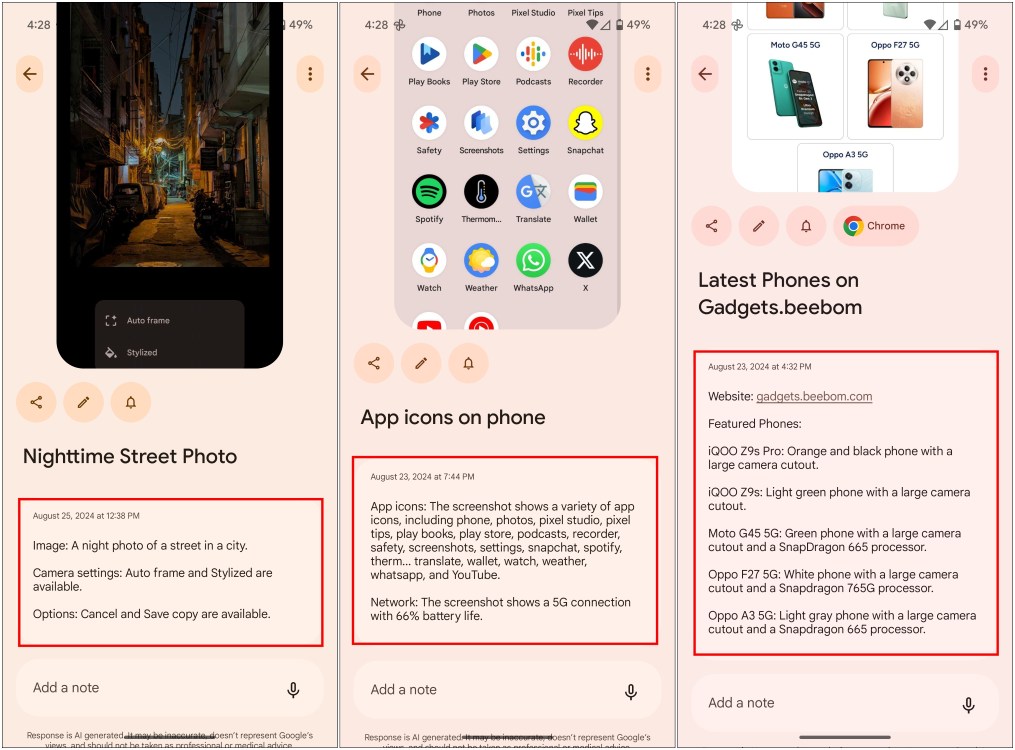
Similarly, in the Screenshots app, the AI will summarize the content of the image. Whether it’s a regular photo or a full-length article. I can see myself using both occasionally, but I wouldn’t miss it if it disappeared one day. In fact, the Weather summaries stopped working after I used the device for a few hours. And after several attempts to set up the app, I couldn’t get it to work again. It seems like a very last-minute addition to me overall.
7. Pixel Studio
This is a new standalone app that lets you create images using prompts similar to DALL-E or Midjourney. It’s good on Google’s part to include this free tool right out of the box. But it doesn’t work on-device and requires the Internet. I tried it, and the results are on par with what you expect with AI images these days.
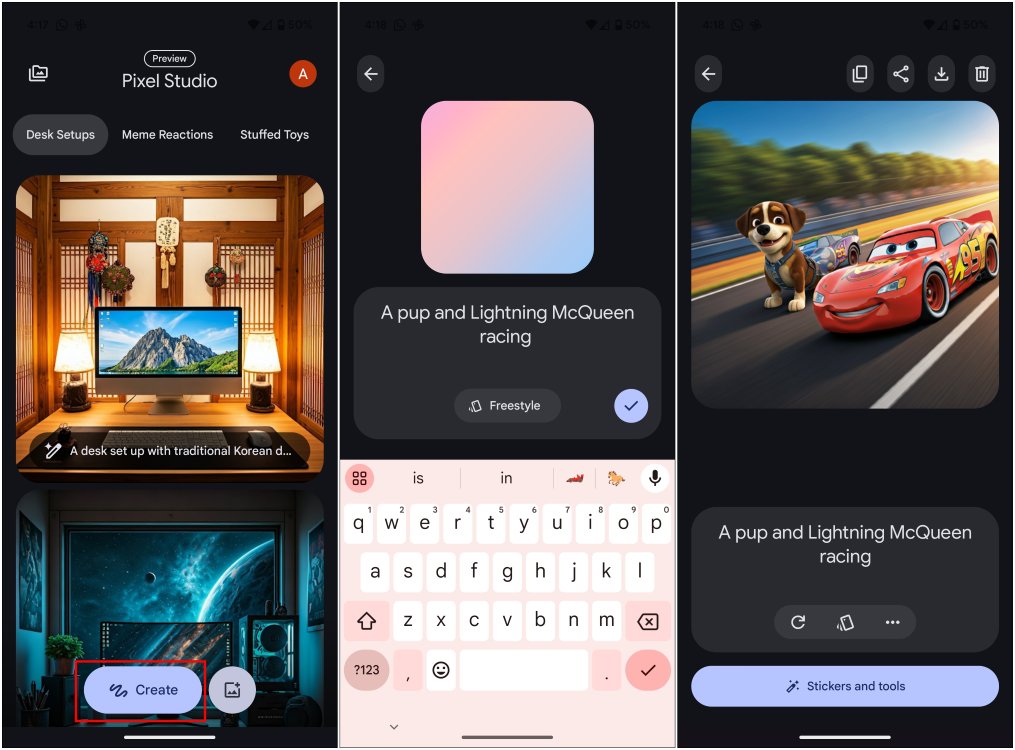
Some nice, some bizarre, and yes, there are restrictions in place. So forget about generating edgy content or creating public figures in fancy clothing. However, you can spend a good 20 minutes working around its limits. It even supports captions, allowing you to use it as a native meme app. Besides this, I didn’t find much value in a tool like this.

Maybe it’s useful if you’re a content creator who occasionally needs AI images, but the novelty wears off soon. After the second day, I returned to my regular set of apps and almost forgot about its existence.
6. Video Boost
Video Boost isn’t new, but to give you a quick recap. It helps improve the video quality by removing blur, stabilizing the footage, and enhancing the colors. All of these were already available with the Pixel 8 Pro. This time, we can record videos in up to 8K resolution on the Pixel 9 Pro and the XL.

The feature has to be enabled before taking the video. The recorded footage will be uploaded to the cloud, where Google’s AI algorithms will do their magic and send you higher-resolution footage. It took us two hours to get the results. The video had clarity, higher details, and more stability.
But, why I can’t just record in 8K to begin with? It’s like creating an artificial solution to a problem that shouldn’t be there in the first place. Most phones at this price range let you shoot natively in 8K. For all these reasons, it’s not as high in this list as it could be.
5. Zoom Enhance
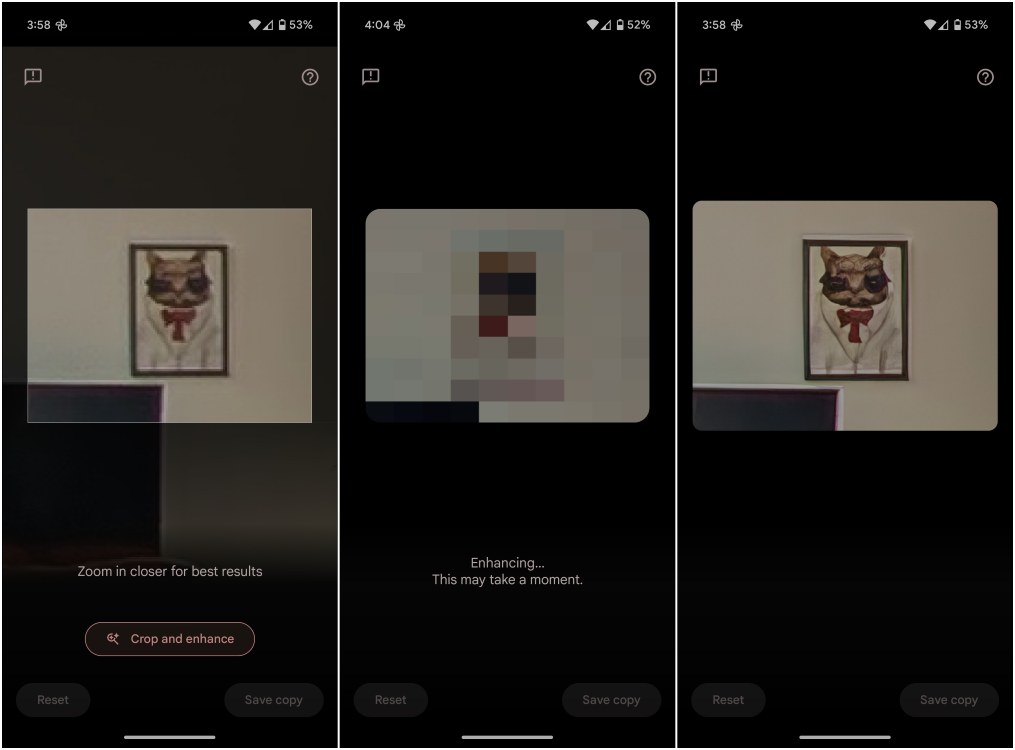
Zoom Enhance was supposed to come out for the Pixel 8 Pro last year, but it’s finally here with the 9 Pro and 9 Pro XL. You can use it to crop into an image, and then enhance it with AI. Making it look sharper and more detailed. Kind of like those old crime dramas, where zooming into a photo just makes it more clear.
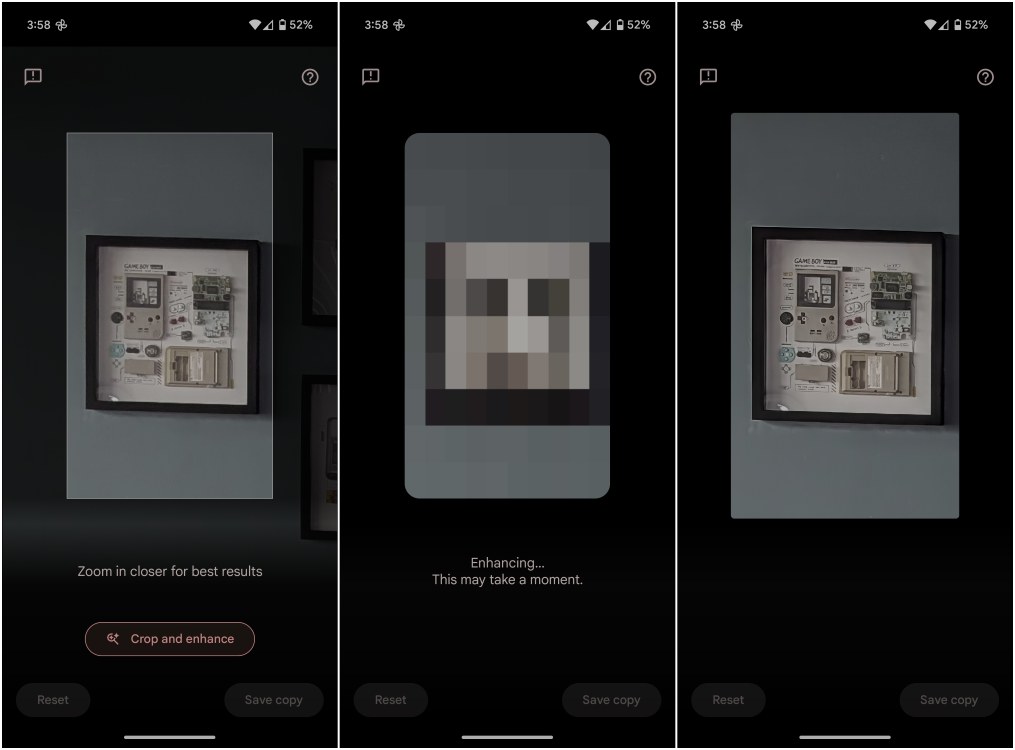
I clicked a few pictures and enhanced them. The results were a mixed bag. Some images came out looking neat, while others, not so much. There were instances, where it should be able to easily recognize the object, and use AI to recreate it in higher quality. But it had a tough time understanding the subject and only smoothened the edges. If it had object recognition, I would have ranked it higher.
4. Reimagine
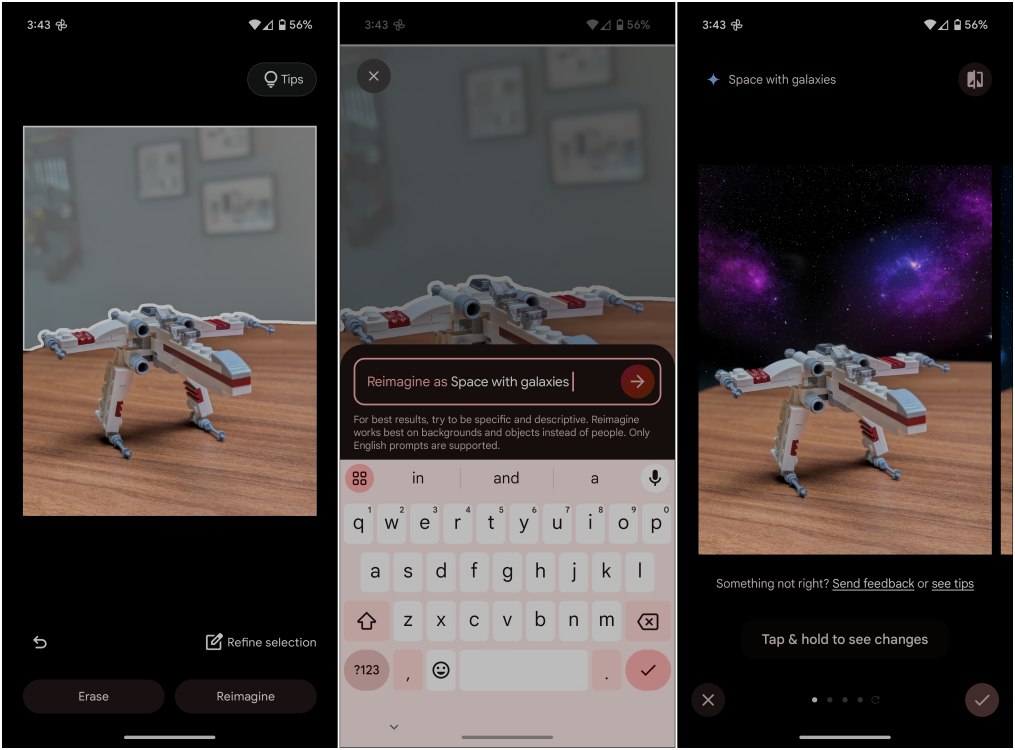
Reimagine is another new AI feature in Magic Editor. It lets you recreate the selected area of an image based on your given prompt. So let’s say, you select a clear sky in a photo, then you can write a prompt to show it’s raining heavily, or get creative and type, “it’s raining meatballs” and it should do it.
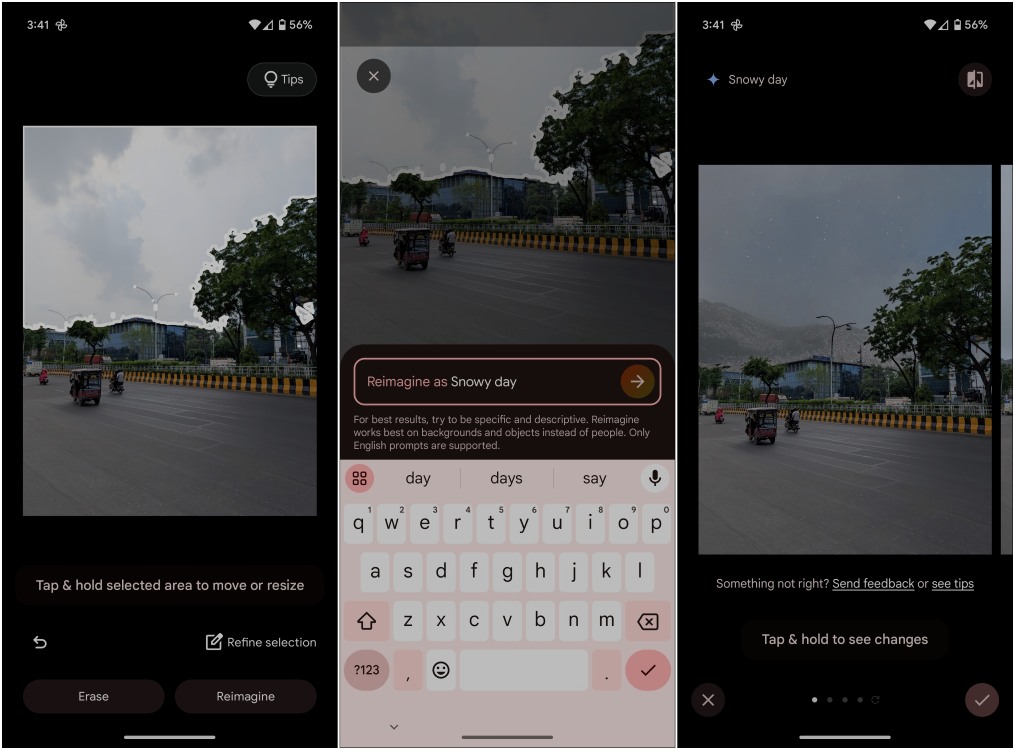
It’s amazing how well it morphs some images, to the extent that I prefer the reimagined version over the original. However, it easily messes up a lot, fails to understand the subject, and I have to select it multiple times, or it creates something random, or unrelated to the prompt. It’s a cool party trick to show off your new Pixel, but it’ll keep that artificial look, especially if you go crazy with your prompt.
3. Gemini Live
There’s also the new Gemini Live conversational chatbot. It’s not particularly exclusive to the Pixel 9 series, as Google themselves demonstrated it on a Samsung Galaxy S24 Ultra. You just need a Gemini Advanced subscription to get this feature. It is capable of carrying out more free-flowing conversations, which can be interrupted mid-sentence or paused.
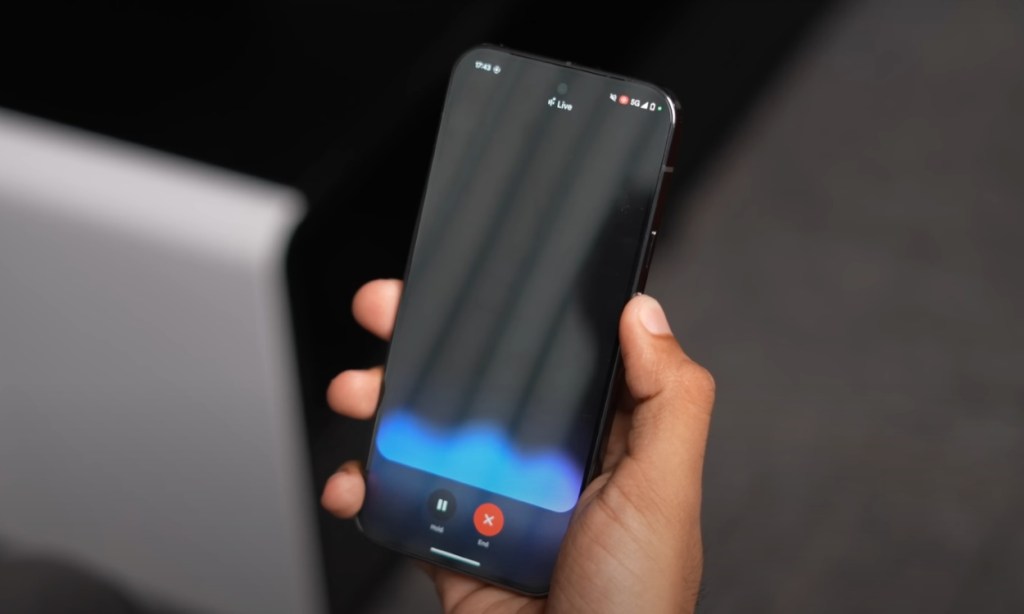
This definitely feels more fluid and natural while I tested it briefly. But you can tell that it is still in its early stages, as it forgot the context after just three or four questions and had to be reminded what we were talking about. It also hallucinated a couple of times, but the responses were pretty quick. Still, in its current stage, it’s pretty impressive, and I’d love to see how Google improves it further. Plus, I love the aura-esque animation for the Live mode.
2. Auto Frame
Magic Editor has also received some new AI upgrades. First is Auto-Frame. It properly frames the subject in the center, zooms out of the images, and fills the edges using generative fill. It’s something like Snapchat’s Extend Snap feature which also utilizes AI, but a more refined version of that.
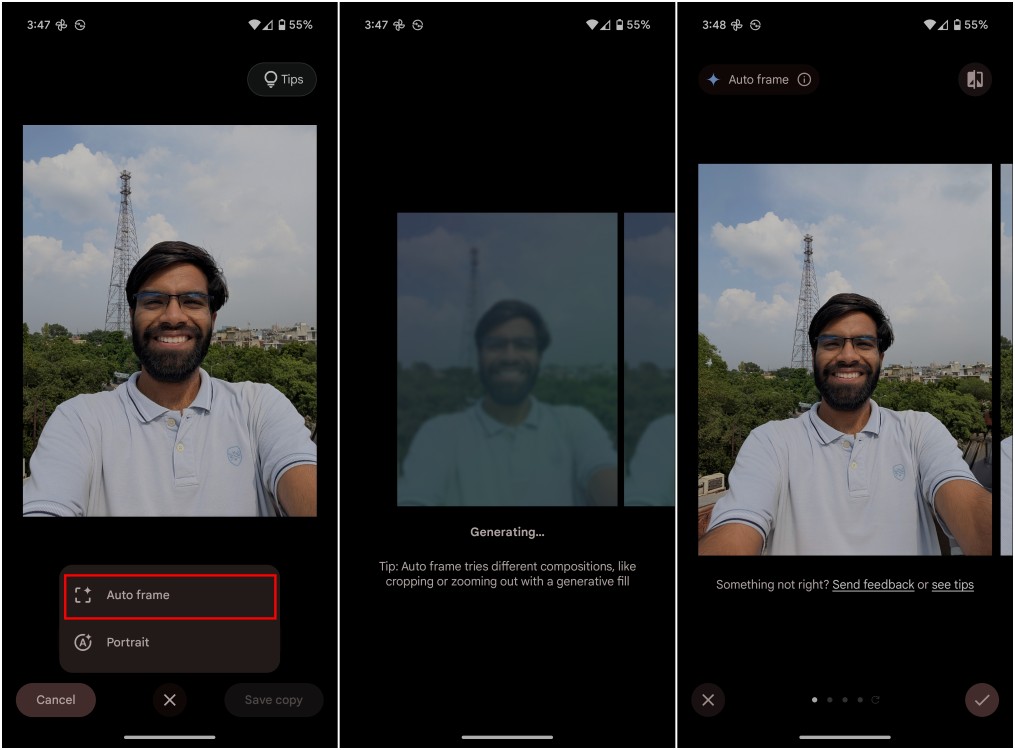
It’s pretty good at understanding the surrounding environment and making up the rest of it based on that. As a point-and-click guy, I often mess up the framing of my shots, and I can see myself using it pretty often. Yes, the AI part won’t be as good for every result, but it worked well in my testing.
1. Add Me

I can’t be the only one with trust issues when handing my phone to someone to click a group photo, right? Well, Pixel’s new Add Me feature can solve this issue with a mix of augmented reality and AI. It’s a two-step process: take a photo of your friends and your friend can take over for you, and take the shot. Pixel will then use AI trickery to combine the two images and include everyone in the frame. And yes… you can use it to capture a photo with yourself.

I tried it with my workmate Sagnik at the Beebom office, and it has its quirks. It will occasionally superimpose one guy on top of another, while other times it may cut off your arm or leg. It’s also possible that you’ll appear to be floating in the air. But given it runs on-device without internet, it easily becomes a quality feature that will come in handy during vacations.
Some features like Add Me, Auto Frame, and even Reimagine put good use to Google’s AI ingenuity. But the rest seem like fluff, just added for the sake of it. I don’t think that Pixel Studio or the Screenshots app will receive regular updates and long-term support down the line. It’s just an experiment on the company’s part to lure in more consumers.
Apart from a few, I don’t see myself revisiting these features in the future. But if you have managed to get your hands on a Pixel 9, and tried it out, then share your opinions below.
Will The New Capture Button Change How We Click Photos On IPhones?
IPhone 16 Pro And 16 Pro Max Debut With A18 Pro And Camera Control Button
How To Record Screen On Windows 11 (6 Methods)


